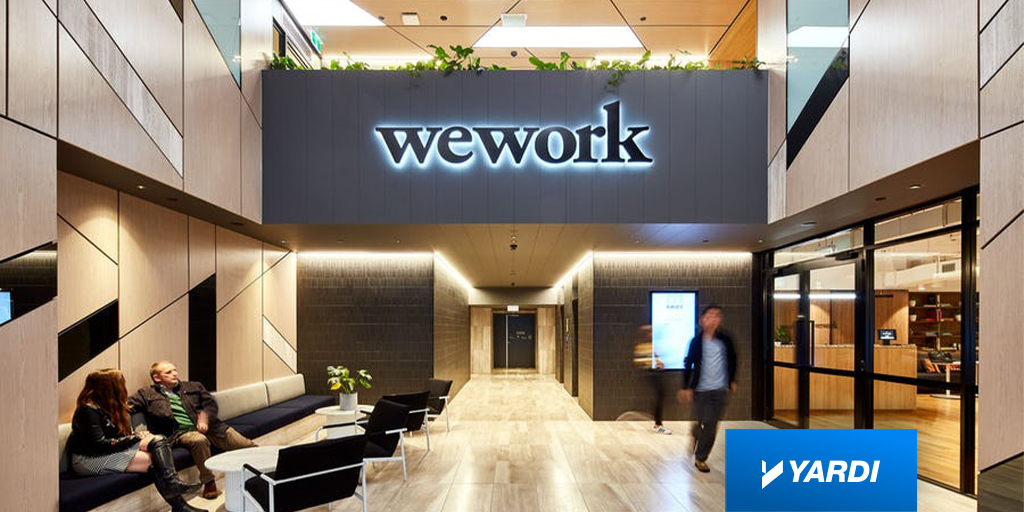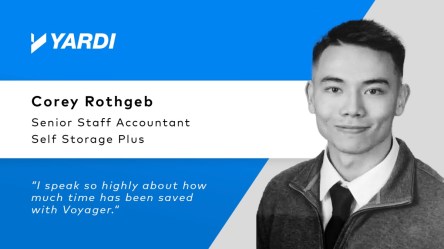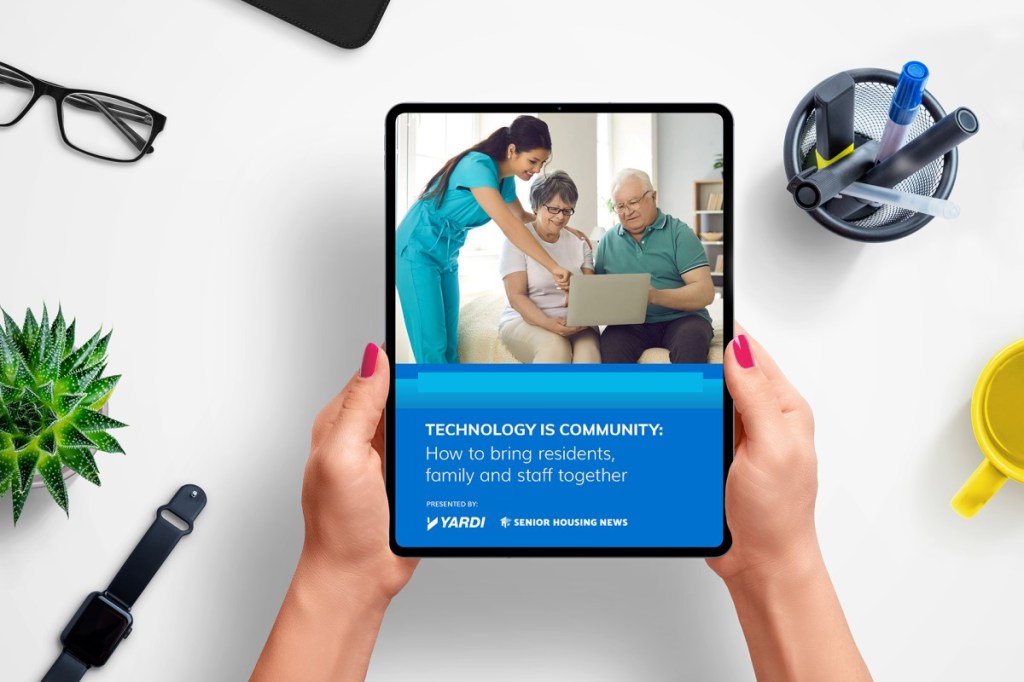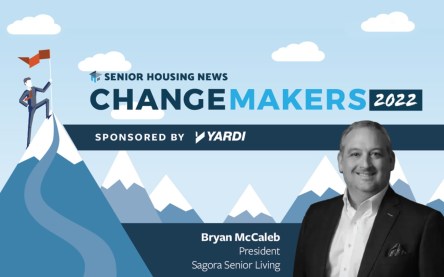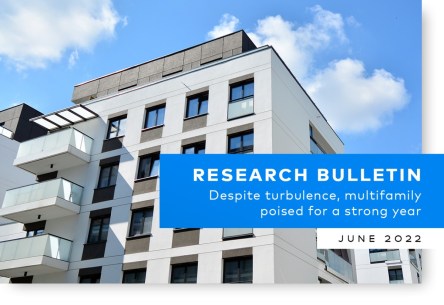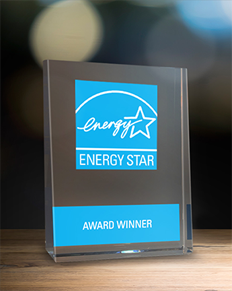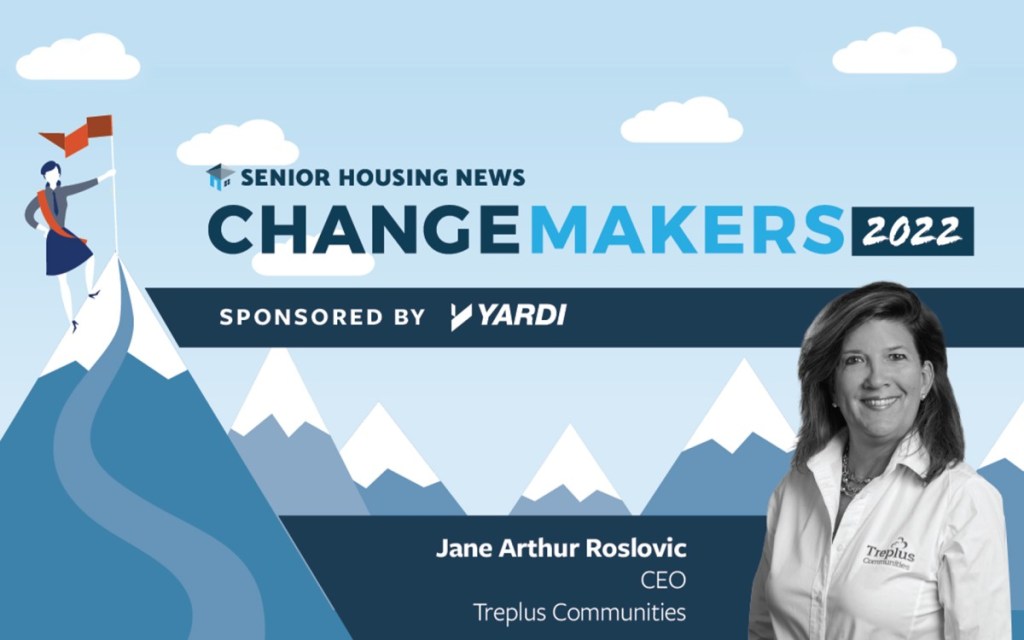WeWork (NYSE: WE), a leading global flexible space provider, today announced the official debut of WeWork Workplace, a new space management solution built in partnership with Yardi, the leading provider of real estate software. WeWork Workplace provides companies with a universal platform that enables inventory management across office spaces, enhanced employee experiences and space optimization through insights and analytics. The proliferation of remote and hybrid work models – vastly accelerated as a result of the pandemic – has created new opportunities for both employers and employees to fundamentally rethink the office and how we engage with it. WeWork Workplace marries space, asset and people management capabilities, removing guesswork from designing a strategic work model by providing actionable data to inform decision making in real time. As a result, the software aims to help employers reduce real estate costs, while empowering employees to more purposefully engage with the spaces they choose and create more meaningful physical connections. WeWork Workplace is the only product in the market that can combine all space types (privately leased/owned, WeWork and WeWork shared/affiliate) within a single experience. Additionally, companies that may need overflow space will have the option to enable access to WeWork and WeWork affiliated locations for their employees globally. “Businesses today must solve for bringing flexible work models to life – optimizing their spaces without sacrificing the culture, collaboration and productivity that happens in-person. This is what we aim to deliver with WeWork Workplace,” said Scott Morey, WeWork’s President of Technology & Innovation. “Combining our advantages in scale, speed and access to flexible spaces, with Yardi’s industry-leading software and tech capabilities, WeWork Workplace doesn’t stop at desk booking or at backend insights – it aims to solve for a dynamic, constantly evolving future of work.” A One-Stop-Shop Solution WeWork Workplace combines the capabilities needed, in one place, to help build, manage and evolve any office space strategy. The software aims to help businesses: Enhance employee experience across an entire portfolio. Dynamic, collaboration focused features built in – interactive floor maps, team booking capabilities, overflow booking automation, visitor management, company announcements and calendar integration, make engagement with the office more intentional and impactful.Manage and optimize all spaces regardless of asset type or geographic location. Universal portfolio management – across all asset types – enables office space strategies centered on utilization. Create user groups, spatial zones and navigate capacity and overflow management. Future proof real estate strategies through actionable insights. Make decisions with confidence through access to stronger, more accurate data. Instantly look into daily and building level data, or view trends over time, such as booking to occupancy ratio, including the ability to sort by property type. Designed to offer a frictionless office experience for companies of all sizes, helping to maximize their spaces for collaboration and innovation, WeWork Workplace is uniquely positioned to enable companies and their people to continuously adapt to a flexible world of work. To learn more about WeWork Workplace, and to sign up for a live demo, visit:...
Self Storage Insights...
With Corey Rothgeb
Corey Rothgeb is the senior staff accountant for Self Storage Plus, an independent business that generates $3.6 million in annual revenue. We talked with him about what it takes to succeed in the storage industry, how he addresses industry challenges and the ways Yardi Voyager saves Self Storage Plus enormous amounts of time and energy. Tell us a little about yourself. What’s your background, and how long have you been in property management?I’ve been with Self Storage Plus since August of 2020. Prior to that I lived in San Diego, California. I studied at the University of California San Diego and received my bachelor’s in economics in 2019. I got my foot in the door in property management with a publicly traded REIT in San Diego. That’s where I practiced on property management software. I worked there for about nine months as an accounts payable clerk and financial administrator working on budgets. Then I made the move to the East Coast in August of 2020 and started as a staff accountant at Self Storage Plus. I’ve since progressed from staff accountant to senior staff accountant and currently hope to progress to controller. There have been opportunities to grow tremendously in property management, and I love the whole real estate industry in general. What challenges does property management software solve for your business?Voyager helps with reporting on our end. I think the biggest challenge we faced when the company switched to Voyager in 2020 was just having processes in place, and Yardi really helped provide structure for those. The invoicing and reporting automation in general provided a kickstart to getting all of our processes in place. What features in Voyager are helping you solve those challenges?The ability to run and automate specific reports. In fact,...
Habitat for Humanity of Ventura County
Creating affordable housing
Yardi is committed to supporting the community in every city where our offices are housed. Each year, the company distributes philanthropic aid to organizations selected by its employees. In 2021, Yardi offices supported more than 350 nonprofits worldwide. For the remainder of the year, we will be bringing you the stories of those organizations and insight into how they aid their communities. Today, let’s get to know Oxnard, Calif.-based Habitat for Humanity of Ventura County, which builds homes in partnership with local, low-income families who invest 500 hours of “sweat equity” into building their future homes, which they purchase for an affordable mortgage. “We provide no-cost, critical health and safety home repairs to seniors, veterans, people with disabilities and other low-income homeowners so they can remain in their homes safely and comfortably in the long-term. We advocate at all levels of government for policies that create more affordable housing for struggling individuals and families,” said Katie Norris, Director of Development & Communications To date, the organization has completed 72 homes and has five more currently underway. This has helped 72 families become first-time homeowners. They have also completed nearly 200 home repairs. This year, Habitat for Humanity is beginning a 10-home build in Simi Valley, completing dozens more home repairs for low-income homeowners across Ventura County, and pushing state lawmakers to include significantly more funding for affordable owner-occupied housing and mortgage assistance for low-income families in the state budget. “The generous funding we received from Yardi will help us significantly as we build and repair dozens more homes in Ventura County over the next several years,” said Norris. “We are incredibly grateful to Yardi for the high level of support they’ve given us over the past couple of years. Our work is made possible by local donors like Yardi who feel passionately about our vision to create a county where everyone has a decent place to live.” One family’s story Meet Deana and her daughter, Saynt. Deana is a hardworking single mom who has been searching for a safe place to live with her five-year-old daughter for a long time. Often forced to move from place to place and renting rooms and apartments in unsafe neighborhoods, Deana worried that Saynt wouldn’t be able to thrive like other children. “She dreamed of a place they could call their own, but with the ever-increasing cost of living, homeownership seemed impossible,” said Norris. One day, “Saynt’s preschool teacher told her that they were a Habitat homeowner, and that it had changed their family’s life. Deana found Habitat for Humanity of Ventura County and added her name to our interest list.” When the opportunity to become a Habitat homeowner in Port Hueneme came up, Deana was first in line to apply. Deana has invested several hundred hours into building her future home alongside Habitat Ventura volunteers and will move into her new home this summer. “I can’t wait to move in, have financial stability and a home where my daughter can flourish… I can’t wait to live freely without the stress of having to move repeatedly. Thank you to everyone at Habitat Ventura, from the bottom of my heart,” said Deana. “A common misconception about Habitat is that we give homes away. We do not – we offer a hand up to low-income families through affordable homeownership opportunities they wouldn’t otherwise have. We help families access financing and Habitat Ventura families’ monthly mortgage payments are usually lower than what they were paying to live in substandard housing,” explained Norris. “Affordable homeownership is a roadmap out of poverty – families earn equity over time, they don’t have to move from place to place, and the benefits last for generations. Families break the cycle of uncertainty and fear and can finally invest in themselves and their communities.” Volunteer opportunities for Southern California employees Habitat Ventura relies on thousands of volunteers per year to advance its...
Multifamily Update
Yardi Matrix Report
Average U.S. multifamily rents rose another $19 in June to edge over $1,700 for the first time ever, according to the latest Yardi® Matrix Multifamily Report. The increase was fueled by strong demand and rent growth throughout the country. Rent growth increased at least 10 percent year-over-year in 25 of Yardi’s top 30 metros. National occupancy rates were solid at 96 percent. On a year-over-year basis, growth continues to slow down. In June, it decelerated by 50 basis points to 13.7 percent. That’s 130 basis points off the February peak of 15.2 percent. Rents in the single-family build-to-rent (BTR) sector continue to grow as well. The average single-family BTR asking rent increased by $23 in June to an all-time high of $2,071. Year-over-year growth dropped by 90 basis points to 11.8 percent. “The multifamily market is starting to show signs of deceleration in June but is still performing at extremely high levels. Year-over-year rent growth was down 50 basis points from May. While rent growth in 2022 is still higher than any previous year on record, it is the fourth month in a row year-over-year rent growth declined,” note Matrix analysts. The expectation for the remainder of 2022 is for rents to increase at slower rates as the economy cools off. “Inflation rates will take a while to ebb, causing consumers to cut into savings and their ability to afford increasing rental rates will lessen as the year goes on,” states the latest report. Learn more in the latest multifamily report. Yardi Matrix offers the industry’s most comprehensive market intelligence tool for investment professionals, equity investors, lenders and property managers who underwrite and manage investments in commercial real estate. Yardi Matrix covers multifamily, student housing, industrial, office and self storage property types. Email [email protected], call...
Women Called Moses
Helping Women in Need
Yardi is committed to supporting the community in every city where our offices are housed. Each year, the company distributes philanthropic aid to organizations selected by its employees. In 2021, Yardi offices supported more than 350 nonprofits worldwide. For the remainder of the year, we will be bringing you the stories of those organizations and insight into how they aid their communities. Today, we introduce you to Women Called Moses Coalition and Outreach of Dallas, Texas. This organization provides services for women and children that have been impacted by domestic violence. It’s a hard topic to talk about, but one that is critical to address. “We place clients in safe places, and link housing, food, any resources available so that we can help women and children and prevent them from returning to their perpetrator or abuse,” said Debra Nixon-Bowles, Founder and CEO of Women Called Moses. “Women Called Moses connects these victims to larger shelters that may be able to give them access to more resources. We focus on making the connection, so these individuals do not become homeless. Women Called Moses works with second chance apartments and local furniture banks to make sure our clients have beds to sleep in, and tables to eat on. We connect employment, mental and health partnerships, private physicians, and more,” Nixon-Bowles explained. Recovering from a challenging time For many non-profits, the pandemic was a disruptive period. That was the case for Women Called Moses. “We lost 70 percent of our funding, including case managers, staffing, and repeat donors. Our focus is now on getting a full staff, grants, fundraising, and provide safety and resources for our clients,” said Nixon-Bowles. “This includes new partnerships and resources for women and children in the community. For an agency of our...
Home Work
Tech Creates New Options
Many companies are returning workers to their offices and sending them to conferences and other gatherings. Is remote work, done by more than 70 percent of workers who can work remotely according to Pew Research Center, passing or permanent in the work environment? Just a decade ago, working from home was the exception, usually allowed only in select cases. It took time for teleconferencing technology to advance to the point where occasionally working from home became more acceptable and normal. “Ten years ago, remote employment basically meant a telemarketing or customer service position at below minimum wage,” said Samantha Lambert, director of human resources for New York City website design company Blue Fountain Media. “It rarely was connected with a full-time career.” Then came the pandemic. The outbreak prompted many employers to shift to a predominantly remote work model to limit spread of the coronavirus and comply with distancing mandates. Along with supporting public health, companies saw an opportunity to save money by cutting down on expensive office space while allowing workers the freedom to create their own schedules and work from wherever they please. Eighty-three percent of employees responding to a workplace survey in 2021 reported that a hybrid model combining remote with time in the office that accommodates both business needs and employee desires is optimal. Tech options Zoom, Microsoft Teams and other systems gained new prominence during the pandemic and cemented remote work into the American economy. “Now, technology affords us the ability to get the same job done, no matter where in the world we are. [It has] enabled us to be in contact with co-workers or clients at any time,” Lambert says. “This technology has advanced so quickly that many companies have even done away with traditional offices and instead...
Overcoming Isolation
Preschoolers Visit Seniors
If you’re looking for a story to brighten your day, look no further. We have a heartwarming post in store featuring preschoolers, seniors and some pretty special friendships. The story comes from this summer feature of Chatham Magazine, a lifestyle publication that’s only released five times per year. Each feature discusses all-things food, arts and the community. And for the story we’re sharing today, you’ll see how local preschoolers paid a sweet visit to senior living residents in their area. We hope the highlight below brings a smile to your face. Feel free to flip to page 96 of the magazine to read the full story. Local preschoolers help senior living residents overcome isolation The past few years have been challenging for seniors and their families. From strict lockdowns to other regulations preventing in-person visits, seniors residing in communities have faced feelings of loneliness and isolation. But there’s always light at the end of the tunnel. And for residents at Galloway Ridge at Featherington, part of that light was a visit from the Primrose School of Chapel Hill preschoolers. The visit was brought to be as part of the school’s “Adopt-a-grandparent” program, which creates opportunities for young children and seniors to develop respectful, positive relationships. “The program provides children the chance to be of service, feel needed, develop sensitivity and respect the needs of others,” shares the co-owner of Primrose School of Chapel Hill, Melissa Mart. “For the [adopted] grandparent, the program offers an opportunity to share talents, knowledge and friendship with the children.” The program brings children into community rooms to play games, make crafts and enjoy story time with senior living residents. The kids also craft greetings, posters and drawings for their “adopted” grandparents. “Adopt-a-grandparent” was in full swing before the...
Proptech Disruption
Prompting Sleepless Nights
After Jack Fitzgerald stumbled across the term ‘proptech’ he spent a sleepless night burning the midnight oil or more accurately, draining the battery on his phone. The technology that had transformed other sectors of the economy was coming for real estate. Fitzgerald, Hitachi’s Director of Smart Cities and Real Estate Tech, recently sat down with Bernie Devine for the latest illuminating installment of the Yardi Proptech Insights series. Fitzgerald has worn many hats. During his eight years with Lendlease, he oversaw the development of Singapore’s Paya Lebar Quarter, played in the experimental sandpit as Lendlease’s head of innovation for Asia and launched Propell Asia, Singapore’s first proptech accelerator. Late at night, he scoured the internet for information on proptech start-ups. From this he built Disrupt Property, a database on 800 companies that was eventually acquired by Unissu. In 2020, he seized the opportunity to “change the future” with Hitachi and is now working with everything from AI to EVs, driverless trains to robots. Technology has not yet delivered the seismic shifts seen in other sectors – but disruption is ahead, Fitzgerald warned. The baby steps – digitising tasks once managed by spreadsheets – have been taken. Now, we are in the “early teenage awkward years” where buildings are getting smarter, but this is not obvious to the user. “The dream is that the building knows I’m arriving, the lifts are waiting for me, the latte is heating up, and the lights are turning on as I sit at my desk,” Fitzgerald said. But this “frictionless experience” is still some years away. But today’s leading-edge technology is tomorrow’s business-as-usual. As soon as tenants experience smart parking or destination lifts in one building, they expect it in all of them, Fitzgerald said. This consumer demand for...
Meet CoworkingCafe.com
End-to-end coworking solution
The Yardi suite of coworking and flex space tools expands today with the launch of CoworkingCafe.com and the acquisition of CoworkingMag.com. Operators of coworking and flex space can take advantage of Yardi’s market leading lead generation, as well as a new feature to allow real-time bookings for conference rooms and private offices. When combined with Yardi Kube for coworking operations and accounting, Yardi has the very first end-to-end coworking solution for flex operators and owners. CoworkingCafe: For Operators & Occupiers CoworkingCafe.com publishes coworking and flex locations across the country, including real-time availability, amenities and packages, photographs, floor plans and even 360-degree videos. The sleek design offers a seamless experience for researching and booking workspaces, all in one app. From an extensive selection of top coworking brands, users can book and pay for a desk, office, meeting room or a complete office package in just a few clicks. CoworkingCafe.com joins the five existing Yardi commercial listing platforms, CommercialCafe, CommercialSearch, PropertyShark, 42Floors, and Point2, all of which now show coworking availability alongside traditional commercial listings. Together, these sites attract 2 million monthly visits and generate 300,000 high quality leads per year. Coworking operators can now manage inventory, marketing collateral, availability and pricing from a centralized dashboard, while workspaces are marketed across the entire listings network. Yardi Kube clients have the added advantage of managing marketing collateral and availability natively, along with operations, accounting, customer contracts, communications, data and Wi-Fi – a single, connected, end-to-end solution. “With the launch of CoworkingCafe, we are excited to help consumers find and book office space, while helping operators increase revenue,” said Rob Teel, senior vice president at Yardi. CoworkingMag Joins the Team Yardi also announces its recent acquisition of CoworkingMag.com, the go-to source for coworking news and trends. CoworkingMag consistently ranks among the top results for coworking-related searches for locations in the U.S. This addition enhances the power of the Yardi listings network and boosts both visibility and leads for all coworking clients. “The acquisition of CoworkingMag accelerates our efforts with its strong online presence and our Kube clients benefit from an expanded audience for their availabilities,” Teel added. “Together, these products provide unmatched value both to consumers and operators.” The Complete Coworking Platform: Yardi Kube Yardi Kube is the most powerful coworking management software on the market, bringing automation, flexibility, and ease to workspace management. The all-in-one platform handles everything from listing and booking coworking spaces — complete with mobile app — to day-to-day operations management and even automates the sales process from lead generation to proposal and execution. For more information about how CoworkingCafe and Yardi Kube streamline operations and increase revenue, contact us/book a demo...
Technology Is Community
Senior Living White Paper
Senior living operators build community, and community is increasingly defined by its technology — the tech used by residents, staff and family. These integrated systems are a community’s lifeblood, enhancing key aspects of the day-to-day experience for both residents and staff. They help staff communicate, empower residents and ease concerns for family members. Ultimately, these systems keep senior living communities in sync. That’s the focus of a brand new Yardi-sponsored white paper, Technology is community: How to bring residents, family and staff together. Published by Senior Housing News (SHN), the resource offers an inside look at how providers are using tech to connect their communities in creative ways. See below for a snapshot of what the white paper entails. Using tech to connect residents, families and staff While the COVID-19 pandemic and subsequent restrictions changed communication in every industry, the pandemic’s risks to seniors made communication in senior living even more important, and more challenging. Today, operators need ways to connect families with their loved ones in communities, and ways to help staff deliver quality care no matter the circumstance. That’s why it is crucial for operators to implement technology tools that streamline communication. Drawing insight from operators Validus Senior Living and Maplewood Senior Living, the white paper shares how solutions like RentCafe Senior Living — a secure online portal — help staff members communicate with each other, with residents and with resident family members. Additionally, how this integrated solution helps users make online payments, review health and wellness information, sign forms electronically and submit maintenance requests. From Validus, you’ll learn how RentCafe Senior Living works to improve communication, streamline billing and even enhance medical care. Through the Maplewood spotlight, you’ll see exactly how this Connecticut-based company is using RentCafe Senior Living to enrich residents’ quality of life in four key areas. That includes socialization, entertainment, safety, exercise and health tracking. Top benefits of improved communication systems New technologies have improved senior living for residents, giving them enhanced experiences in their finances, health, socialization and more. Leading communication tools have also improved the experiences of staff and family. With RentCafe Senior Living, three of the industry’s major stakeholders — residents, staff, families — share a communication tool that is easy-to-use and wide-ranging in impact. Areas of impact include: Resident surveysEasy community communicationPaperless paymentsActivities and wellness calendarsHealth updates for familiesElectronic signatures and document management Explore the white paper for a detailed look at each of these areas. Read more As the pandemic has largely affected senior living communities, it’s imperative for operators to implement technology that enables communication anytime, from anywhere. Read the white paper in full to learn how tech solutions like RentCafe Senior Living make the...
Apartment Reviews
Impact more than you think
Online apartment reviews are an important way for potential renters to get a feel for your community, and it’s critical to have them on your website. In addition, reviews directly impact how your website appears in a search. In fact, it’s estimated that reviews account for 17% of the ranking factor for the Google 3-pack of local listings! A June 2022 survey from RentCafe.com revealed that over 60% of Gen Z renters consider ratings and reviews most of the time when searching online. But it’s not just Gen Z. The NMHC 2022 Renter’s Preference Report found that 69% of prospective renters looked at ratings and reviews when searching for an apartment community. A solid reputation management strategy impacts three areas of your business: marketing, leasing and customer service. Read more to understand the importance of reputation management throughout the renter lifecycle. How does reputation management impact marketing? Good apartment reviews lead to good search signals, which will boost your community in search engine results, helping you get found by more prospective renters. But there’s more to it than simply collecting a few good reviews. A solid reputation management strategy focuses on four key components when it comes to reviews: Quantity – How many reviews do you have compared to your competitors? More reviews mean more visibility and greater reach.Quality – How good are your reviews compared to your competitors? Positivity and honesty are important when it comes to creating quality reviews.Recency – When were your latest reviews posted? A review from one month ago will carry much more weight than one from six months ago.Responses – Is your business responding to every review? 46% of renters expect to see responses to all reviews, so it’s important to follow up on both good and bad...
EIA Updates
Offer Long-Term Focus
Here’s the latest of our periodic updates of news and trends reported by the Energy Information Administration, a statistical and analytical agency of the U.S. Department of Energy. Conflict spurs fuel price uncertainty Fuel price projections are uncertain, due in part to the Russia-Ukraine war’s potential impact on nations, energy producers and markets. With global inventories of crude oil, natural gas, and coal below average before the war, U.S. gasoline and diesel prices hit multiyear highs in March. EIA forecasts that the average inflation-adjusted prices of gasoline and diesel this summer will be the highest since summer 2014. Production could temper prices in ‘23 EIA projects that U.S. oil production will average 12.4 million barrels per day in 2023, surpassing the record high for domestic crude oil production set in 2019, with domestic crude oil production increasing steadily between 2021 and 2023. Crude oil inventories will reach 465 million barrels at the end of 2023, which is about 11% more than inventories at the end of 2021. “We expect global demand for petroleum products to return to and surpass pre-pandemic levels this year, but crude oil production grows at a faster rate in our forecasts,” said EIA Acting Administrator Steve Nalley. “We expect that as crude oil production increases, inventories will begin to replenish and help push prices lower for gasoline, jet fuel, and other products in the short term.” By September 2023, U.S. natural gas production will hit an all-time high daily average. Coal consumption, meanwhile, will fall by 2% in 2022 and remain relatively unchanged in 2023. Home appliances getting smarter EIA’s recently released 2020 Residential Energy Consumption Survey offers a look at electricity-consuming devices used in American homes. The survey reveals that nearly half of U.S. households used LED lighting in...
Feeding OC
Second Harvest Food Bank of Orange County
Yardi is committed to supporting the community in every city where our offices are housed. Each year, the company distributes philanthropic aid to organizations selected by its employees. In 2021, Yardi offices supported more than 350 nonprofits worldwide. For the remainder of the year, we will be bringing you the stories of those organizations and insight into how they aid their communities. Today, Second Harvest Food Bank of Orange County in Irvine, Calif. is in the spotlight. Second Harvest’s mission is to end hunger in Orange County. The organization works with a network of more than 250 partners, including places of worship, schools, senior centers, homeless shelters and others to provide healthy food and to help build their capacity to receive and distribute nutritious food. Additionally, Second Harvest operates key programs aimed at providing much-needed food to vulnerable populations. These core hunger-relief programs include Mobile Pantry; Mobile and Permanent School Pantries, and College Pantry; Kids Cafe, Senior Grocery, and Park-It Market. “The goal of our hunger-relief efforts is to provide a safety net to the people we serve. We know these families are not relying solely on Second Harvest for their meals; rather, we provide support to help those struggling to make ends meet and offset their expenses, ensuring their limited funds can be spent on other needs, such as rent, gas, bills, medication,” said Megan Hunker, Donor Relations Manager for Second Harvest. In fiscal year 2022, which concluded in April, Second Harvest distributed almost 36 million pounds of food to an average of 331,000 people per month. Nutrition support for those in need “We believe that providing dignified, equitable and consistent access to nutritious food creates a foundation for community health and is a catalyst for societal transformation,” stated Hunker. “This coming year we are focused on purchasing nutritious food items like eggs, milk, and protein items and growing produce at our Harvest Solutions Farm.” Families like Victor and Elizabeth’s are among those served. Victor, a U.S. Marine Corps veteran, and his wife, Elizabeth, face challenging times. When Victor suddenly faced a serious health challenge, Elizabeth had no choice but to quit her job and take care of him. As a result, they live off a fixed income that barely makes ends meet; some months the ends never meet at all. “Second Harvest are angels in disguise,” says Elizabeth. “If it were not for the food bank, we would have an even harder time.” Yardi’s funds support Second Harvest general operations, “which gives us great flexibility to use the donation where it is needed most such as purchasing nutritious food, building out partnership capacity and more,” Hunker said. “Yardi’s support came at a time during COVID when many distribution sites shut down, un/under employment skyrocketed, and the supply chain took a hit. The funds donated by Yardi helped Second Harvest meet the increased need as we completely shifted our operations and started purchasing the majority of the food that was being distributed,” Hunker explained. Volunteer opportunities in Orange County Second Harvest currently offers two in-person volunteer opportunities. One opportunity is in the Distribution Center (DC), Monday-Friday with morning and evening shifts available. Volunteers in the DC assist in a variety of projects that help sort and process food to send out. The second opportunity is at Harvest Solutions Farm, Tuesday-Saturday with morning shifts available. Volunteers help plant, harvest, weed and maintain the fields of the Harvest Solutions Farm located just down the road from the food bank in Irvine, Calif. Second Harvest started a 45-acre farm in partnership with OC Produce and AG Kawamura at University of California’s SCREC. At Harvest Solutions Farm, they grow seasonal crops, including cabbage, broccoli, celery, bell peppers, watermelon, and squash, to provide over 2 million pounds of fresh produce to the community each year. To learn more about volunteer opportunities, please visit: https://feedoc.org/get-involved/#volunteer To learn more about Second Harvest, visit https://feedoc.org and...
Changemaker Series
Announces Bryan McCaleb
If you’ve visited The Balance Sheet recently, you’ve likely seen our posts about Changemakers, an interview series that spotlights innovative leadership in senior living. As a sponsor for the fourth consecutive year, we’re honored to shine a light on each leader’s story. The in-depth interviews are released in batches by Senior Housing News (SHN). And the latest group of honorees includes Changemaker Bryan McCaleb, president of Sagora Senior Living and someone who embodies what it means to put residents first. About Bryan McCaleb As president of Sagora, a Yardi senior living client and resident-focused organization, Bryan McCaleb knows how to push boundaries and build success. Most importantly, he stands behind Sagora’s mission to help seniors enjoy retirement with style and dignity. Since joining the Sagora team in 2006, McCaleb has helped the organization serve seniors — exceeding their wants and needs — through exceptional residential alternatives. In his detailed interview with SHN, McCaleb shares how Sagora has grown in such a competitive landscape, sharing how promoting internal team members has made the difference. Read a portion of Bryan McCaleb’s interview below: SHN: As you think back on your career in senior living, what changes have you driven that you’re especially proud of? McCaleb: Our company has always made a difference through creating. The term “Resident first” may be a cliché in our industry, but it is not a cliché at Sagora, where we have a motto “Resident First, Team focused and Quality centered.” We’ve worked hard over the last six years to create a team member-first environment. If the team member is our focus, they can take the care focus from us. From my seat, it really makes a difference. When they’re happy to be there and they feel appreciated, every aspect of...
ESG Ready
OSCRE Innovation Forum
According to Naseem Wenzel, Executive Director and Head of Real Estate Assets at Lionpoint Group, “ESG is coming fast and furious, which leaves investment managers, real estate owners and operators and service providers in a position of either being reactive or proactive.” What position is your company in? In OSCRE’s May 25 Innovation Forum, ESG: Insights to Assess Your Readiness, the panel, moderated by Wenzel, discussed what’s needed to move the industry forward. The speakers represented “a mix of perspectives from change leaders in the industry” including Chris Devine, head of client analytics, Cushman & Wakefield, Rick Ferrino, senior VP technology, Blackstone and Soheil Pourhashemi, senior VP business technology, Brookfield Properties. When asked individually about their company’s approach to ESG, the panelists touched on creating long term strategies, dealing with resource issues including staffing and training to focus on ESG and the overall need to automate data collection, analytics and reporting. The speakers agreed that evolving practices and focusing on how data flows — including real-time reporting from assets, are important initiatives. With regard to governance, the panel discussed measuring and normalizing data, creating data standards and developing organizational maturity. One speaker commented that ESG practices are integral to building a resilient business and creating value for investors. ESG is also a critical aspect of capital fundraising. For service providers, the focus is on the occupier side and how to get data standards in place, with information flowing from investors to occupiers. All the panelists agreed that automating data collection and reporting is key. Survey responses on ESG readiness In OSCRE’s recap of the session, the audience’s answers to the polling questions included these key takeaways: 53% of respondents described their organization’s level of preparedness as just getting started and 0% reported that...
Hugs Cafe
Providing meaningful work
Yardi is committed to supporting the community in every city where our offices are housed. Each year, the company distributes philanthropic aid to organizations selected by its employees. In 2021, Yardi offices supported more than 350 nonprofits worldwide. For the remainder of the year, we will be bringing you the stories of those organizations and insight into how they aid their communities. Today, get to know Hugs Café in McKinney, Texas, which provides meaningful training and employment opportunities for adults with intellectual and developmental disabilities. This year, seven-year-old Hugs Café is focusing its efforts on raising funds for a permanent training facility, Hugs Training Academy. “This expansion will allow us to continue our mission and increase the number of skilled individuals we can provide the culinary and hospitality workforce,” said Ruth Thompson, Founder and Board President of Hugs Café. “In addition, we will no longer have to say we have a wait list for admission into one of our programs. Previously our waitlist prevented us from accepting new individuals into our mission. This expansion will provide a consistent opportunity for others to come in and receive services.” Thompson shared the story of participant Kathy, known as “Bread Queen” at Hugs Café. “Before coming to work for Hugs Café, Kathy was working for a wine bottle company and her job was to put labels on the wine bottles. Due to Kathy’s Cerebral Palsy, this job was very challenging and not something she was able to do effectively. Kathy was allowed to sit at the work station and be paid just like her peers, but she was unable to perform the task assigned and would leave work each day in tears,” Thompson shared. “Now that Kathy has a meaningful job at Hugs Café, her day is...
National Rent Growth
Projections Bump Up
Rents in most American cities continue to rise slightly each month but are not duplicating the rapid escalation rates exhibited in 2021. But given ongoing gains, Yardi Matrix has revised its end-of-year projections upwards for most markets in a new special report. Average month-over-month asking rents increased by 1.1 percent in May compared to the one percent month-over-month increase in April. However, year-over-year asking rents decelerated, from 16 percent in April to 14 percent in May. “While we are seeing the usual seasonal increase leading into the summer months, 2022 does not look like a repeat of 2021 even though rent growth remains elevated,” state Matrix analysts. Asking rents fell in only six markets: the gateway markets of Queens and Brooklyn; small Southern markets Macon, Ga., and Jackson, Miss.; and tropical Honolulu and the Southwest Florida Coast. Conversely, 84 markets experienced greater than one percent month-over-month increase, and seven markets saw month-over-month growth that topped two percent: Charleston, Knoxville, the Bay Area-South Bay, Miami, the Urban Twin Cities, Wilmington, N.C., and Portland, Maine. Most markets received an increase to their end-of-year projections in the newly released Matrix report. The biggest increases were concentrated in markets that continue to outperform expectations, with Scranton-Wilkes-Barre, Wilmington, South Bend and Spokane all seeing a more than five percent increase for year-end 2022. The nation’s economic outlook plays an important role in rent forecasts. That outlook has become increasingly tumultuous, with inflation at a 40-year-high but unemployment historically low. Analysts are continuing to keep a close eye on the market and monitoring the impact of the Federal Reserve’s approach to combatting inflation as well as the war in Ukraine. “The Fed will likely ramp up its pace of rate hikes and quantitative tightening, increasing the chance of recession for...
Me Fine Foundation
Helping Families in Crisis
Yardi is committed to supporting the community in every city where our offices are housed. Each year, the company distributes philanthropic aid to organizations selected by its employees. In 2021, Yardi offices supported more than 350 nonprofits worldwide. For the remainder of the year, we will be bringing you the stories of those organizations and insight into how they aid their communities. Today, learn about the Me Fine Foundation of Durham, NC, which provides vital financial assistance and emotional support to families with children facing a medical crisis so that they can focus on their child. “Me Fine is focused on continuing to meet the needs of the community in a reliable and dignified manner while hoping to become a household name in the Triangle area of NC. Introducing more people to what our families endure will hopefully convince them to help us in our work,” said Joey Powell, Executive Director. “Major corporate support from partners like Yardi help us meet these family needs. As a responsive (rather than prescriptive) organization, we believe these families know what they need during their child’s crisis.” Powell shared the heart-wrenching story of a family with a child who had an aggressive form of cancer. The little girl was treated for about a year intensively and was able to beat the disease into remission. “However, the treatment regimen was so intense and required so much of a time commitment from her family, that the parents were really in financial peril. Unfortunately, a few years later, the cancer returned, and the girl succumbed to the recurrence quickly. Her family was so financially strapped that they couldn’t afford to have her body claimed from the hospital morgue. Me Fine was able to work with a local funeral home to help...
National Stars
In Energy Leadership
Yardi recently earned the 2022 ENERGY STAR® Partner of the Year Sustained Excellence Award, the highest honor bestowed by the ENERGY STAR program, in recognition of its longstanding commitment to protecting the environment through superior energy efficiency achievements. The company’s accomplishments over the past year include helping more than 200 clients benchmark energy in 5,000+ buildings, sharing ENERGY STAR data to help clients access green financing for buildings, earning ENERGY STAR certification for two corporate headquarters buildings in Santa Barbara, Calif., and providing energy classes for more than 6,000 client representatives during its virtual Yardi Advanced Solutions Conference. Yardi shared the ENERGY STAR Partner of the Year spotlight with organizations that also distinguished themselves in energy stewardship in 2021. They include: Industry associations including BOMA International, a trade association for commercial real estate professionals. BOMA International promoted ENERGY STAR resources to help its members meet sustainability objectives. BOMA’s Georgia chapter also received an award for promoting ENERGY STAR values in articles, videos and website content. IREM, an international commercial real estate organization, earned recognition for launching certified sustainable property programs and courses. Yardi has presented its smart energy solutions at BOMA and IREM conferences and provided a grant for BOMA’s Water and Waste Challenge program.Commercial building interests such as global real estate services and investment firm CBRE, which achieved ENERGY STAR certification for 174 properties and benchmarked 5,941 buildings in ENERGY STAR Portfolio Manager®; real estate investment manager Nuveen Real Estate, which delivered sustainability and ENERGY STAR Portfolio Manager training to 100% of its internal staff; professional services provider and investment manager JLL, which delivered ENERGY STAR messages to 1.3 million people through its social media channels; and Vornado Realty Trust, a fully integrated REIT that benchmarked 100% of its assets for energy, 99%...
Changemakers Series
Jane Arthur Roslovic
This year’s Changemakers series has spotlighted some fantastic senior living leaders so far. That includes the latest batch of honorees, whose interviews are officially live. The annual series, a collaboration between Yardi and Senior Housing News (SHN), features interviews with pioneers across the industry. And to be deemed a Changemaker, you need a strong appetite for risk and of course, change. That describes Jane Arthur Roslovic, CEO of Treplus Communities and a newly-announced Changemaker. Meet Jane Arthur Roslovic Jane Arthur Roslovic has been in the real estate development business since the 1980s, and she’s held a managing member position at Treplus Communities since 2012. From decades of experience, she’s well versed in driving unique, strategic initiatives in senior living. In her SHN interview, Roslovic speaks to her team’s brand strategy when it comes to targeting active adults and their children. She also shares how the real estate landscape is evolving, and her experience with driving change throughout her career. Here’s a snapshot: SHN: As you think back on your career, what changes have you driven at Treplus or in the industry that you’re especially proud to share? Roslovic:I am proud of the brand we created, which was ultimately our intent at the beginning. We wanted to build something that the 55-plus active adult really identified with, and we’ve accomplished that goal. It’s meeting a need for the baby boomer, but what’s even cooler is that Gen Z or Gen X is right behind them seeking lifestyle choices. The children of active adults support this lifestyle choice and the fact that we’ve created a brand they already identify with is exciting — not just for Treplus, but the whole active adult asset class. SHN: What are some ways in which you think the senior living industry needs to change in the next five years? Roslovic:Active adult living is our specialization. Awareness is key in the active adult industry, and we have to promote it every day. It is clear amongst my peers, who are out developing active adult, that it is taking all of our efforts to make active adult living a strong, viable option for the younger side of middle age. We are offering an active lifestyle solution that offers greater financial flexibility and the ability to be a part of community of people who are in the same place in life. In the next 5 years active adult housing will be a solid choice for those who are looking to downsize and live maintenance free. With respect to senior living, I believe labor is the biggest challenge and needs the greatest change. The labor force has been hit so hard, and it is critical that we get workers re-engaged with delivery of service while making them proud of their profession. The pandemic was a setback and now we have to play catch up. In senior living, there is still opportunity for delivery of a better resident experience. I’m not sure how quickly that’s going to happen, but I think active adult is keeping a good pace as the industry evolves. Read on From us here at Yardi, thanks for reading! We’re honored to sponsor the Changemakers series for the fourth consecutive year. To learn more about our solutions in senior living, visit our product suite. Head here to read the rest of Jane Arthur Roslovic’s SHN...

